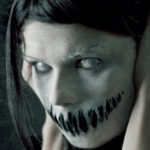 Pop Culture
Pop Culture  Pop Culture
Pop Culture  Animals
Animals 10 Remarkable Things We’ve Recently Learned about Animals
 Weird Stuff
Weird Stuff 10 Reasons the Psychic Internet Theory Will Blow Your Mind
 Movies and TV
Movies and TV Television’s Top Ten Most Ruthless Serial Killers
 Weird Stuff
Weird Stuff Ten of the Strangest Paraphilias Ever Documented
 Miscellaneous
Miscellaneous 10 Interesting Physics Facts about Bullets
 History
History 10 Oddest Naval Actions in History
 Music
Music 10 “Bands” That Are Actually Just One Person
 History
History Ten Uprisings Led by Women
 Creepy
Creepy Top Ten Creepiest Dolls in History
 Pop Culture
Pop Culture Ten Celebrities Who Straight-Up Lied on Home Tours
 Animals
Animals 10 Remarkable Things We’ve Recently Learned about Animals
 Weird Stuff
Weird Stuff 10 Reasons the Psychic Internet Theory Will Blow Your Mind
Who's Behind Listverse?

Jamie Frater
Head Editor
Jamie founded Listverse due to an insatiable desire to share fascinating, obscure, and bizarre facts. He has been a guest speaker on numerous national radio and television stations and is a five time published author.
More About Us Movies and TV
Movies and TV Television’s Top Ten Most Ruthless Serial Killers
 Weird Stuff
Weird Stuff Ten of the Strangest Paraphilias Ever Documented
 Miscellaneous
Miscellaneous 10 Interesting Physics Facts about Bullets
 History
History 10 Oddest Naval Actions in History
 Music
Music 10 “Bands” That Are Actually Just One Person
 History
History Ten Uprisings Led by Women
 Creepy
Creepy Top Ten Creepiest Dolls in History
Top 10 Things You Probably Never Knew About Witches
As the phrase ‘witch hunt’ still shows, the Witch Craze of the early modern period is now an infamous byword for superstition, hysteria and irrational cruelty. Yet witch beliefs and persecutions remain surprisingly misunderstood. When people talk about ‘witch burning Puritans’ for example, they wrongly assume that Puritans killed more witches than did High Anglicans or Catholics, whilst witches were almost never burned in England or America. The same goes for ‘medieval superstition’. The Middle Ages had far fewer witch accusations or deaths than the time of Shakespeare or Charles II, or indeed the Ancient Romans. Finally, although the British Witchcraft Act of 1736 outlawed official witch persecution, popular beliefs and popular violence ran on – and on, and on… Well into the twentieth century alleged witches were still in danger of their lives in Britain, Europe and North America.
10 Women Convicted For Witchcraft For The Most Ridiculous Reasons
10 The Romans

Belief in witchcraft is probably as old as fear itself. Ronald Hutton finds degrees of it in Ancient Egypt and Mesopotamia. What is perhaps more surprising is how powerful and deadly the fear of witchcraft was in Ancient Rome. For many, the Romans now seem to epitomize order, efficiency, rational pragmatism and the heights of culture. That seemingly paradoxical mixture is echoed again in early modern Europe, where the madness of witch hunts co-existed alongside the greatest achievements in art, music and literature, and the early Scientific Revolution sparked by Robert Boyle, Thomas Willis and Newton.
Throughout history, and in much of the developing world today, the witch was prime scapegoat for bad weather, crop failure, and above all, disease. Hutton cites a Roman epidemic of 331BC during which over 170 female citizens, two of them noblewomen, were put to death for magic. Between 184-180 BC epidemics across Italy claimed the lives of two thousand supposed black magicians in one wave, and three thousand in the next.[1]
9 Clairvoyance

Lara Apps and Andrew Gow estimate that, between around 1450 and 1750, roughly 110,000 people were tried as witches, and about 60,000 of these executed. The vast majority of these victims lost their lives owing to superstition and misogyny. But there is evidence that a small handful of so-called witches had genuine psychic powers.
An especially significant case of this occurred in Scotland in 1591. During a spate of accusations in North Berwick from 1590-92, a woman called Agnes Sampson was tortured and interrogated, and finally brought before King James VI. James was initially skeptical of Sampson’s occult claims, until she related to him the exact words of a conversation between himself and his wife Anne, on the first night of their wedding in Norway. On hearing this, James reportedly stated that ‘all the devils in hell could not have discovered the same’ and now began to take Sampson more seriously.
Modern examples of clairvoyance are well known among mediums. Remote Viewing and clairvoyance have been used by the CIA and by the police when seeking missing persons. Sampson was garroted and burned in Edinburgh on 28 January 1591. But this was just the beginning of a British witch craze which James later took south to England, when he became James I in 1603.[2]
8 The Witch of Edmonton
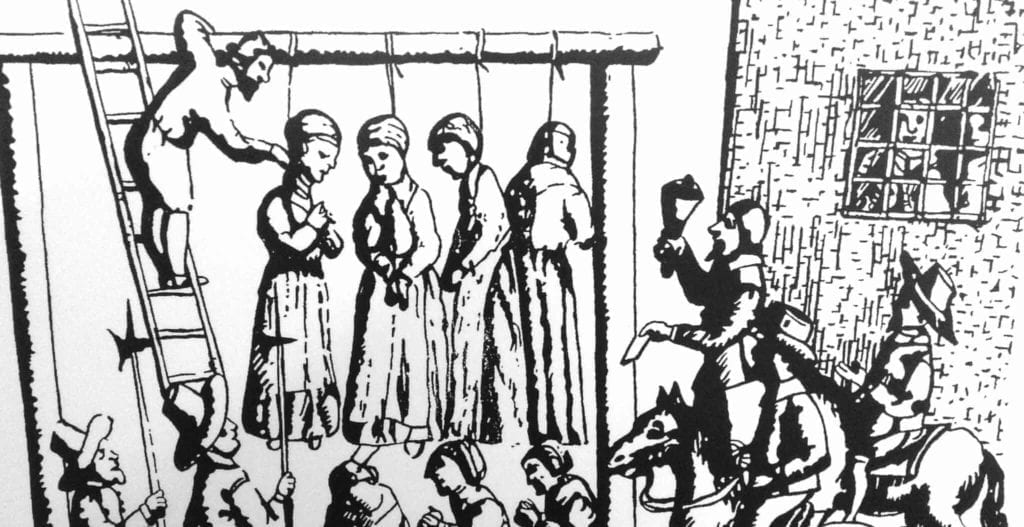
On 14 April 1621, Elizabeth Sawyer of Edmonton was charged with various crimes performed by supposed witchcraft. On 19 April she was hanged as a witch at Tyburn. One especially damning piece of evidence against Sawyer was the death of a neighbor, Agnes Ratcliffe, after an argument between the two women. Ratcliffe’s husband testified to an alleged curse on his wife, who had then gone to bed, foaming at the mouth in terror, and dying within four days. Numerous other accounts of Voodoo Death indicate that Ratcliffe actually died of fear.
The case is now famous because of the play based on it, rushed opportunistically onto the stage by Thomas Dekker, William Rowley and John Ford that same December. Whilst this adaptation may have been partly inspired by the success of Marlowe’s Doctor Faustus, The Witch of Edmonton was very different. Many audiences were probably drawn by wonder and terror, and the topical buzz of the story. But shrewder viewers may have realised that the real villains here were those who ostracized and demonized a lonely old woman – to the point where her only two friends were the Devil and his dog. Our distance from the world of Jacobean witch beliefs is now sharply captured by modern reactions to the black devil dog, played then by an actor in a dog suit. Some scenes between Sawyer and this uncanny mutt are indeed poignant. But 21st century viewers may well feel ambivalent about the one in which she promises the animal the witch’s teat presently, with the dog responding: ‘Bow wow! I’ll have it now!’[3]
7 Witch Cannibals

Like some kind of imaginative black hole, witches sucked in just about every conceivable taboo and gave it new life. Time and again, witches were accused of cannibalism, especially the eating of babies or children. In some cases they were said to rob graves, and powder bones for their magic; but they were often seen as lusting for flesh as food. Lyndal Roper records the 1590 confession of one Barbara Lierheimer of Nordlingen, who had supposedly eaten ‘”a roasted child’s little foot”‘. The fact that Lierheimer died as a result of torture would give most of us some prejudice against her accusers. Yet, between 1590 and 1598, it was believed that Lierheimer and a number of other ‘respectable’ citizens were secretly eating children.
On 30 April 1611 a male witch, Louis Gaufridi, was burned in Aix-en-Provence. Amongst various strange details of this case (not least that Gaufridi himself was a priest) was Gaufridi’s habit of never touching his food. Asked about this at table one day, the priest answered—with perhaps impolitic candour—that ‘he little regardeth your pottage and eggs, he feeds upon good flesh, the bodies of infants, which are invisibly sent unto him from the synagogue’. From the same text we presently hear of ‘the young sucking infants’ which Gaufridi and his coven ‘have eaten, and others which they have strangled, and digged up from graves to make pies withal’.[4]
6 Sucking out Your Life
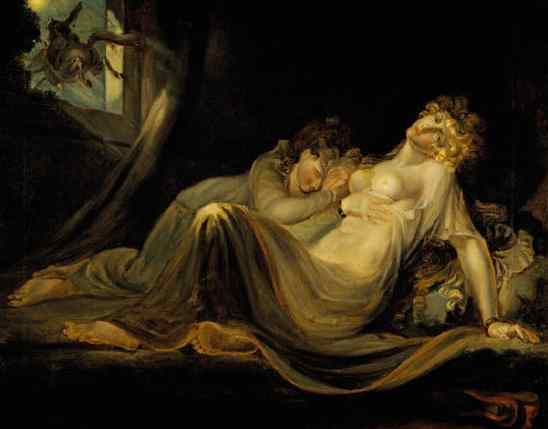
If there is one single belief about witches which broadly covers all their supposed crimes, it is this: witches attacked life. They were often the scapegoats for miscarriages, infertility, and cot deaths. They were also scapegoated for severe weather which threatened the life and fertility of crops; and no less frequently for any illness of livestock.
These beliefs distilled themselves into a recurrent fantasy: that witches somehow sucked the life from food, crops, animals – and people. At the time of Shakespeare, the soul was a real biological force, and fat had a status as an essence of life which rivalled blood. Whilst we do hear of witches drinking blood, the accusations made in Samlesbury, Lancashire, in summer 1612, are probably more typical of imagined witch assaults. Two sisters, Ellen and Jennet Bierley, were alleged to have killed an infant by occult means, later removing it from its grave to roast, boil and eat parts of it, after which they ‘did seethe the bones of the said child in a pot, and with the fat that came out of the said bones, they said they would anoint themselves, that thereby they might sometimes change themselves into other shapes’. To achieve the murder Jennet Bierley had supposedly ‘thrust a nail into the navel of the said child: and afterwards did take a pen and put it in at the said place, and did suck there a good space, and afterwards laid the child in bed again’. After this ‘the said child did thenceforth languish, and not long after died’. Many early-modern observers would have believed that Jennet was sucking out the child’s soul.
Near Capitalo in Mexico in 1888, a man named Medina was on trial for the murder of a reputed witch. She had allegedly claimed ‘protection money’ from many parents, on the threat that she could suck out children’s breath and kill them, evidently from a distance.[5]
10 Modern Witch Hunts You Won’t Believe Happened Recently
5 Male Witches
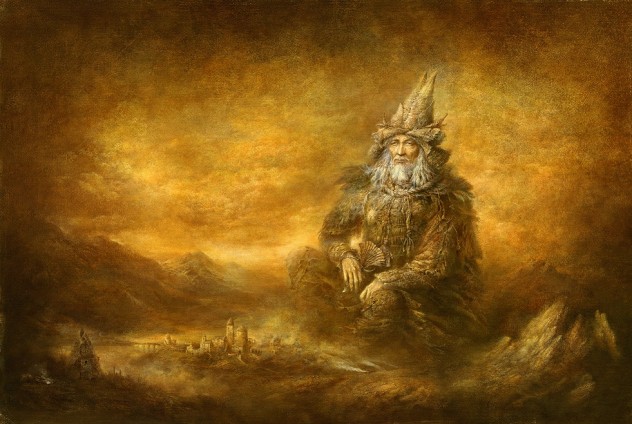
About 80% of those accused and killed for witchcraft were women. But for some reason, Normandy boasted an unusually high number of male witch cases from 1564-1660. As William Monter has shown, of 380 witchcraft defendants in this region, around three-quarters were male; whilst after 1630, ‘men virtually monopolized Norman witchcraft cases’.
Back in Britain, the notorious Witch Country of Essex featured two extraordinary ‘male witches’ with very different characters and fates, across the last decades of Victoria and the reign of Edward VII. In 1864, Emma Smith and Samuel Stammers of Sible Hedingham were sentenced to six months’ hard labour for beating and ducking in the river an elderly deaf-mute Frenchman, known locally as ‘Dummy’. After going to bed in wet clothes, Dummy contracted bronchitis, and presently died. The assailants evidently believed that Dummy, known as a fortune teller, had bewitched them. Sadly, his being French and a deaf-mute would also have fed into this paranoia.
Meanwhile, in Canewdon in Essex, a man named George Pickingale (or Pickingill) died in 1909, aged 93, having enjoyed a long and terrifying life as a reputed male witch. Pickingale could supposedly stop farm machinery merely by looking at it, so that farmers bribed him to keep away. Many villagers lived in terror of his evil familiars, in the form of white mice. In his later years, he coerced villagers into fetching his water for him, on the basis of his formidable occult powers. Pickingale was also a healer of sorts, and may indeed have been clairvoyant.[6]
4 Cutting a Witch
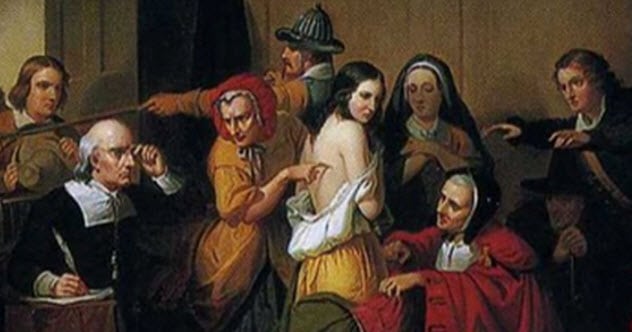
Spontaneous vigilante assaults on supposed witches, sometimes fatal, may have been motivated by terror, hysteria or personal feuding in many cases. But the widespread and enduring habit of ‘cutting a witch’ was based on the magical idea that this particular assault would cancel the witch’s power.
In Scotland this tactic was known as ‘cutting a witch above the breath’, ie, on the forehead. Lizanne Henderson tells of the Reverend Peter Rae of Kirkbride, a former law student of Glasgow University, doing this in 1706 to a woman believed to have bewitched him into sickness. One night in 1826 a Mr Monilaws, the minister of Kirkpatrick Fleming in Dumfries, was called out urgently to a riverside cottage. After a miller’s pigs had drowned in the river, he had decided on his uncanny female neighbour as the culprit, and so ‘had slit the skin of her forehead across, and let it hang down over her eyes. Mr Monilaws and his son sewed it up for her.’ In Market Rasen, Lincolnshire in 1842 a brickmaker named Radley became obsessed with a supposed witch, whom he believed to be the cause of his long-term health problems. Meeting her in the street one day, he cut her arm so that it bled profusely. The lady in question was Radley’s mother.[7]
3 Child-Witches
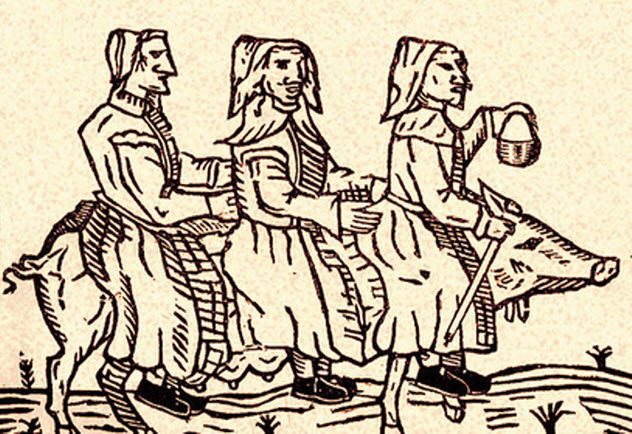
What could possibly be cuter than small children dressed up as witches on Halloween? In fact, this modern custom would bewilder and horrify many parents from the fifteenth to the nineteenth centuries. Usually, children were especially likely to be the victims of witch-craft. But occasionally, they were identified as witches themselves.
Over 40 children were executed as witches in Wurzburg in the 1620s. In 1669, a whirlwind of terror exploded through the Swedish village of Mohra, where the minister suffered Sleep Paralysis Nightmares, and lost the power of speech for several weeks. Related interrogations revealed up to 300 children who were claimed to have been attending Witches’ Sabbaths. That August, fourteen women and one man were beheaded and then burned. Fifteen children were executed, and 148 whipped. In German Augsburg in 1723, children were again alleged to be attending Witches’ Sabbaths, and putting teeth and diabolic powder in their parents’ beds. Lyndal Roper records that around 20 children aged six to sixteen were held in prison cells for a year. One child was jailed on the request of his father, and one was not released until 1729.[8]
2 The Witch Dynasty of Dettingen
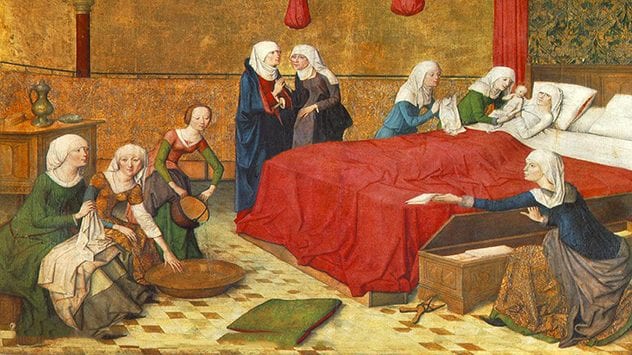
Many witch-hunters believed that such devilish magic was passed down, one way or another, from diabolic parents to their children. In Dettingen, southern Germany, the Gamperle family were known as career witches and serial killers on an epic scale. Husband and wife Paul and Anne formed a coven with their sons Simon and Jacob, along with tailor George Smaltes, and armourer, Ullrich Sehelltibaum. When a storm broke on 23 July 1600, a dog fled into a cave and disturbed the Satanic Six at their black rites.
Ensuing confessions before the Governor of Munich were memorable indeed. Paul claimed to have been trained in the family business by his grandmother, and to have murdered 100 children, two of his uncles, and sixteen neighbours. Anne tallied 100 children and nineteen old people, also having hexed into suicide an innkeeper’s wife, who ran into an oven, and her husband, who stuck his head in a swilling tub and drowned. The sons had jointly killed over a hundred, with Jacob overcoming and slaying six men who tried to mug him. Adding in the totals claimed by Smaltes and Sehelltibaum, we have 527 murders by the coven, a figure rivalling the reports of the Hungarian Countess Elizabeth Bathory around the same time.
Outside Munich city hall on 29 July, a vast crowd saw Anne have her breasts cut off, the executioner then using them to strike her in the face. She was whipped with wire, stretched on a wheel until her arms broke, and set on a spiked metal chair to be roasted alive. The sons were roasted together on the same stake, and Paul Gamperle was impaled and roasted alive.[9]
1 Witches and Poltergeists
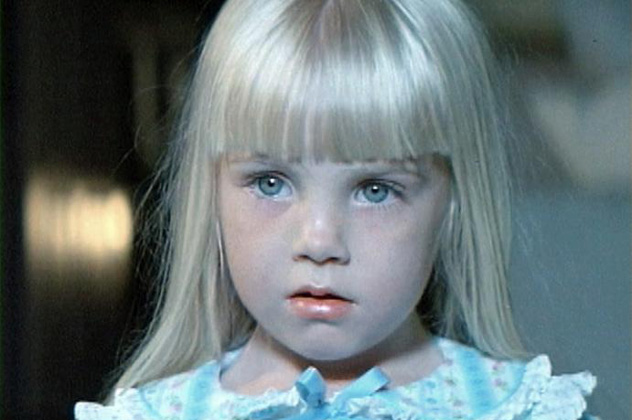
A few years ago I had the very strange experience of studying poltergeists and finding, in conversation with various friends, that these angry or disruptive spirits had invaded the houses of my fellow academics. The more I discussed the topic, the more cases I heard. Poltergeists (I realised to my consternation) do actually exist. And further research showed that they were the cause of witch accusations in a small number of cases. Poltergeists seem to use the energy of a young person in a given household, and that person is often female. Given that bizarre events follow this person around, observers can then leap to accusations of witchcraft.
In Cork in Ireland in 1661, Florence Newton was charged with witchcraft after an argument with one Mary Longdon had caused Longdon to suffer fits. The stones which fell from nowhere around Longdon were classic poltergeist stuff. Missing records now leave us unsure of Newton’s sentence, but formal witch charges were extremely rare in Ireland. In Cornwall in 1821, a long running and violent stone-throwing poltergeist sparked witch panic in Carelew Street, where a mob of children at one stage pursued an old woman with the aim of stripping her and drawing blood from her. In 1896, explosive and repeated hammerings at a house in Edithweston, Rutland, caused the owners to consider demolishing the property, and prompted older villagers to pin the blame on a young servant girl, aged around 14, and supposedly ‘in league with the Devil’. Again, the girl was probably a focus, although not a deliberate instigator of the noises.
On the Italian island of Elba, young Scottish woman Carole Compton arrived to care for a family’s three year old child – only to find spontaneous fires breaking out around her, and objects falling from nowhere. During a spectacular trial, Compton was accused of casting the evil eye on the child, and the word ‘witch’ was repeatedly hurled at or associated with her. Once more, she was almost certainly an involuntary poltergeist agent. The year was 1983.[10]
10 Ways European Witch Finders Tested Their Victims
About The Author: Richard Sugg is the author of thirteen books, including Fairies: A Dangerous History (Reaktion, 2018), The Real Vampires (Amberley, 2019), Mummies, Cannibals and Vampires: the History of Corpse Medicine from the Middle Ages to the Falun Gong (Routledge, 2015; 3rd edn KDP, 2020), Bloodlust (KDP, 2020), and The Smoke of the Soul (Palgrave, 2013; 2nd edn, KDP, 2020). His work has been featured on Channel 4, and in The Guardian, Der Spiegel, and the New Yorker. He posts videos on a wide range of weird and obscure topics regularly. @DrSugg.
